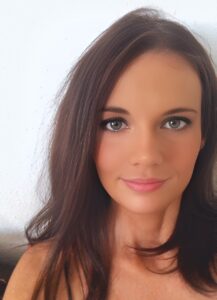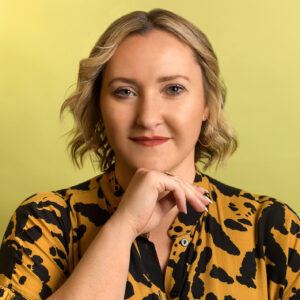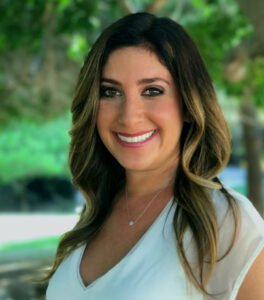Taking the leap to full-time freelancing requires courage, determination, and a whole lot of flexibility. We talked to four creatives who launched their solo careers in 2020 about their challenges, wins, and tips for successfully going it alone. Plus, scroll to the end to hear advice from a writer who’s been navigating the freelance landscape—and helping other writers do the same—since 2017.
Carrie Back, travel writer and editor
Why did you choose full-time freelancing? Years ago, I attended a writers’ residency that gave me the opportunity to build a portfolio. When 2020 rolled around, I realized that I wanted to be my own boss and work remotely. The pandemic gave me that extra push to quit my previous job and do something that I enjoy.
What was one big problem you faced (and how did you solve it)? Starting a portfolio so you can show clients and magazines that your work has been published is hard work at first, but once you have a portfolio, you can start showing editors your writing style, which will help you break into bigger and more well-known publications.
What has been your biggest win? I’ve always wanted to be published in magazines like Travel + Leisure so editors would take my writing more seriously. I now have bylines in my dream pubs after tons of hard work.
What is something you wish you would have known before you made the leap? More about the business side aspect of freelancing, like how to get clients, the importance of starting contracts and negotiating higher rates. Always ask for more; the worst they can say is no!
What’s next for you? I’d love to get invited to more press trips, get published in bigger publications, and continue traveling and doing what I love. Follow Carrie Back
Libby Connolly, independent creative director
Why did you choose full-time freelancing? I worked for small studios and agencies, and a part of me had always been curious about what working for myself could look like. After some time in the field, I found myself really burnt out at my agency job. I began to build my confidence in my skill set, communication, and relationship-building and thought, “I could do this differently, in a way that works better for me and my clients.”
What was one big problem you faced (and how did you solve it)? I noticed a big gap in overall communication and connection with clients resulting in a lack of full creative freedom and potential. I place a large emphasis on building strong, trusting, mutually beneficial relationships with my clients to truly understand them, their passions, their goals, and their business to create the fullest expression of what their brand can become.
What has been your biggest win? My initial engagement with a current client was the largest scope I had ever won. We’ve been developing his confectionary startup for over a year now; we’ve tackled the initial brand discovery and identity, packaging design, and landing page, and will soon do a branded photoshoot and launch campaign. Because of that trust and relationship-building, we’ve signed two additional statements of work (SOW) together, resulting in better work and higher revenue.
What is something you wish you would have known before you made the leap? Focus on relationships and how you can help others; the money will follow.
What’s next for you? My mission for the next few years is to foster new relationships with founders to help them better understand, connect, and engage more meaningfully with their target audience. People—both founders and customers—want and deserve to feel seen, heard, and understood. My work lies in bridging that gap. Follow Studio Libby Connolly
Mike Plunkett, brand copywriter and strategist
Why did you choose full-time freelancing? I had freelanced for many years while I was in my first career as a journalist. In the midst of COVID, I decided it was finally time to make a go out of this; I wanted to work for myself and take what I had learned to help businesses get better at their messaging and storytelling.
What was one big problem you faced (and how did you solve it)? Gaining enough traction to leave my W-2 job and do this full-time. I ended up working with a marketing agency through a referral from another writer I had edited way back when. That one-off job became an ongoing partnership and gave me the validation that this was really possible.
What has been your biggest win? Winning a white paper project even though I had never officially written a white paper. I knew I could apply my journalism skillset and, with help from the Freelance Writers Den course on White Papers, get that first one done. They loved it, and it got me more work from them!
What is something you wish you would have known before you made the leap? Not every client is the same, and each one has their own definition of a successful project. Don’t do mediocre work, but also don’t always try to create a work of art. It’s all about client success and effectiveness, not showing off creative prowess.
What’s next for you? Scaling in a way that makes sense for me as a company of one. It’s all about building great partnerships with great companies that bring them real value. Follow Mike Plunkett
Emma Grace Moon, affiliate marketing manager for DTC brands
Why did you choose full-time freelancing? I started to get more and more freelance client referrals to the point that I couldn’t balance my full-time job and freelancing on the side. I realized that I was learning more and faster in my freelance work, so it was a significant growth opportunity to go full-time.
What was one big problem you faced (and how did you solve it)? I was nervous about being able to afford the lifestyle I wanted with income from freelancing full-time. To solve that, I got super clear on my bare minimum expenses (what I needed to live), my extra expenses (things that are nice to have), and the amount I would pay in taxes. With that clarity, I calculated a clear baseline and a minimum retainer I would charge for my services per client.
What has been your biggest win? Scaling from freelancer to agency founder. It has come with challenges, but it’s been one of the most rewarding journeys of my life to be able to grow a stellar team, work with more clients with bigger names, and see that what I once thought was a side hustle become a larger business opportunity.
What is something you wish you would have known before you made the leap? I’m a young founder (23!), and I’ve grown up really fast from running a business and growing a team. I quickly realized that my friendships, interests, and priorities changed. It was lonely for a while, but I began to connect with more people on a similar path and got to know myself in this new phase of life. It just took time.
What’s next for you? I’m excited to scale the business with intention and work with more values-aligned brands. Follow Praize
Jill Schildhouse, writer and editor
Why did you decide to go full-time freelance in 2017? The final straw for me was when I was on vacation in Hawaii, and my boss and employees just wouldn’t leave me alone. It was just constant texts and phone calls, and I hadn’t taken a vacation in two years. I came back and put in my notice.
What is your best advice for new full-time freelance creatives?
1. A lot of your work will come from networking and word of mouth. A lot of my work early on, and still to this day, came through my network. You really need to foster those relationships because editors move to other publications. Some of these relationships pop back up even decades later.
2. There’s enough work for everyone. I don’t view other freelancers as my competition. Just because I give somebody an editor’s email address doesn’t mean that I’m now going to miss out on an assignment as a result. Reciprocity was really important to me, and I’ve never been one to gatekeep sources or contact information. I operate my business not with a scarcity mindset but focused on abundance.
3. Don’t over-niche yourself. I’ve been a true generalist my entire career, and what kept me afloat during the pandemic was my ability to quickly get up to speed on any subject matter and having editors know they could count on me to write about any weird topic they threw my way. I would caution newer freelancers against pigeonholing themselves into one or two small niches; it puts you in a precarious position when the world suddenly shifts.
4. Diversify your income streams. At the end of 2021, I diversified my income streams out of just journalism. I did more content marketing work last year, and I launched a Substack newsletter that was initially free and then added a subscription model. I started earning more money than I ever expected, not only from paid subscriptions but also from other services like consulting work that I promoted through my Substack.
5. Celebrate your wins. Each time I land a new piece in a new publication, it’s exciting, and I think the culmination of all of those small wins over time is what makes you a great freelancer.
They made it work, and so can you.
Freelancing is not a side hustle; it’s a legitimate, full-time career that can give you agency and flexibility while still paying your bills and investing in your retirement. Whether you’re new to this industry or a long-time pro, keep these tips top of mind:
1. Get educated on the business side of freelancing so you can work smarter, not harder.
2. Focus on human-to-human relationships and show clients how you can make their lives better.
3. Know that going it alone may change your priorities in work and life, and give yourself time to grow into the new you.
4. Remember to work toward your client’s definition of success, not just your own. Adjust your work accordingly.
5. Diversify your income streams so you’re prepared for whatever world-changing event comes next.
Are you looking for more tips on full-time freelancing? Subscribe to the Contently blogs The Content Strategist and the Freelance Creative and follow us on LinkedIn and Twitter.
Go to Source
Author: Jillian Anthony




